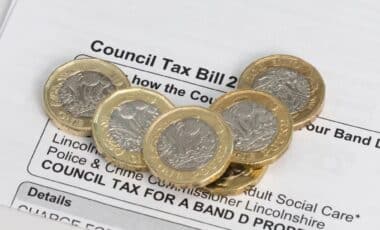Chancellor Rachel Reeves has suggested that tax hikes could be on the horizon this autumn, following the government’s reversal on proposed welfare reforms.
The climbdown on changes to Personal Independence Payment (PIP) has left a £5 billion gap in the Treasury’s forecasts, and Reeves has made it clear that tax rises may be necessary to fill the void.
The government had initially planned to save up to £5 billion annually by restricting eligibility for PIP. However, after facing significant pushback from backbench MPs, the government abandoned the reforms, forcing Reeves to reconsider how to address the fiscal shortfall.
She has implied that it would be “irresponsible” to rule out potential tax increases in the upcoming budget, citing the “damaging” fallout of the welfare U-turn.
Possible Income Tax Rise
Among the potential tax increases, a modest rise in income tax appears to be one of the more straightforward options.
According to The Times, raising the basic rate of income tax by just 1p could generate around £8 billion annually—enough to cover the welfare bill shortfall. However, this could contradict Labour’s key pledge during the last general election not to raise taxes for “working people.”
The government may sidestep this commitment by freezing income tax thresholds, pushing more workers into higher tax brackets due to inflationary wage growth. This strategy, while politically contentious, would yield a similar financial benefit without formally increasing tax rates.
Alternative Measures to Balance the Budget
In addition to income tax adjustments, other levies are being discussed to help close the fiscal gap. One possibility is increasing corporation tax for banks, which have reaped significant profits from higher interest rates and quantitative easing policies. Reversing cuts to the bank surcharge could raise around £1.5 billion annually, according to The Guardian.
There are also suggestions for a new levy, possibly in the form of a “defence levy,” reintroducing the health and social care tax initially proposed by Boris Johnson’s government in 2021, but scrapped by Liz Truss’s administration.
Reeves could revisit this proposal, potentially framing it in line with the government’s commitment to spend 5% of GDP on defence by 2035.
Furthermore, there has been discussion about reinstating the pensions lifetime allowance, which was abolished last year. This policy would cap the amount individuals can save in their pensions before facing higher tax rates. However, it could face significant opposition due to its potential impact on pensioners.
In addition, Reeves may look at reintroducing taxes on dividend income, which remains exempt within certain personal tax allowances. Removing the £500 dividend allowance could generate approximately £325 million annually, though this could discourage investment in UK companies.
Finally, a wealth tax, which has gained traction within Labour circles, could be levied at £4 billion annually. Public opinion generally favours taxing the wealthy over cuts to public spending, with recent polls showing broad support. However, such a move might drive the wealthiest out of the UK, reducing its overall effectiveness.









